Science 4.6
Force, motion, and energy. The student knows that energy exists in many forms and can be observed in cycles, patterns, and systems. The student is expected to:
- (1) differentiate among forms of energy, including
mechanical, sound, electrical, light, and thermal;
- (A) differentiate between conductors and insulators of thermal and electrical energy;
- (B) demonstrate that electricity travels in a closed path, creating an electrical circuit; and
- (C) design a descriptive investigation to explore the effect of force on an object such as a push or a pull, gravity, friction, or magnetism.
- Plus Plan
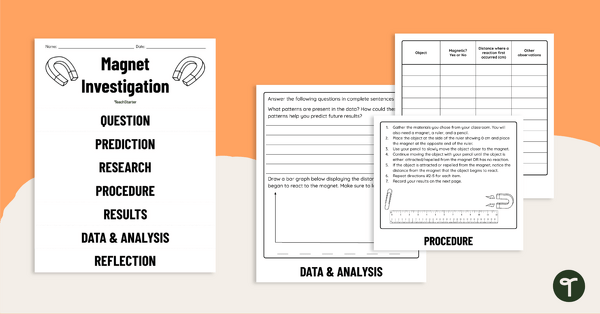
Magnet Investigation Flipbook
Explore magnetic and non-magnetic materials and investigate the strength of magnets with this investigation flipbook.
- Plus Plan
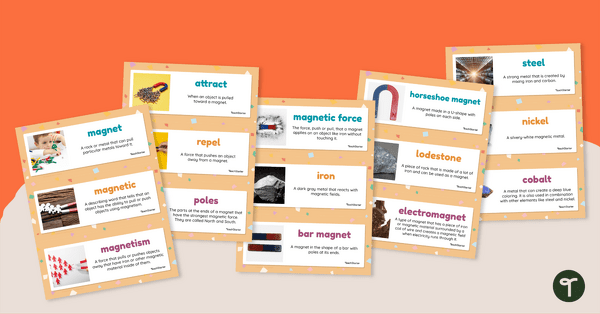
Magnetism Vocabulary Cards
Reinforce science vocabulary in your classroom with this set of word wall cards that focus on magnetism.
- Plus Plan
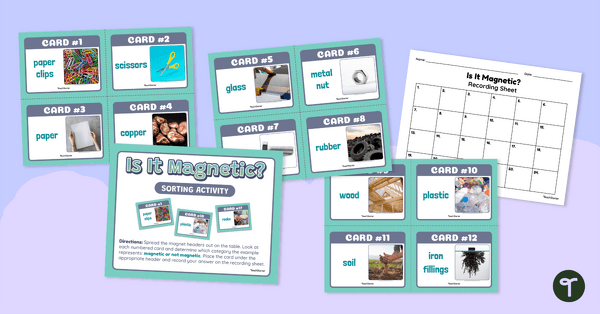
Is It Magnetic? Sorting Activity
Use this sorting activity when classifying objects as magnetic or not magnetic.
- Plus Plan
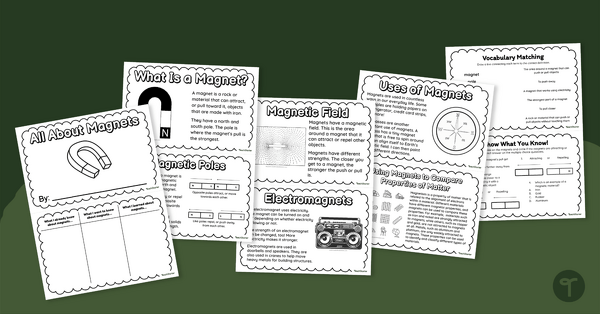
All About Magnets Mini-Book
Learn about magnets, magnetic poles, magnetic fields, and more with this printable mini-book.
- Plus Plan
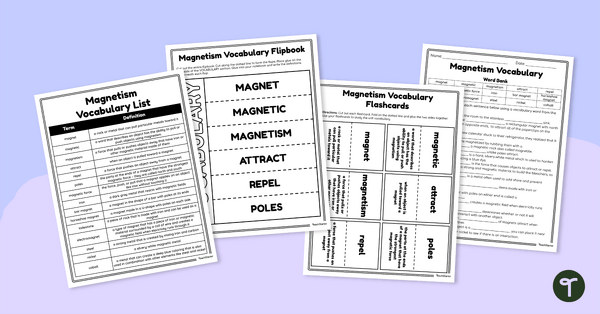
Magnetism – Science Vocabulary Worksheets
Review terms associated with magnetism with this science vocabulary worksheet pack.
- Plus Plan
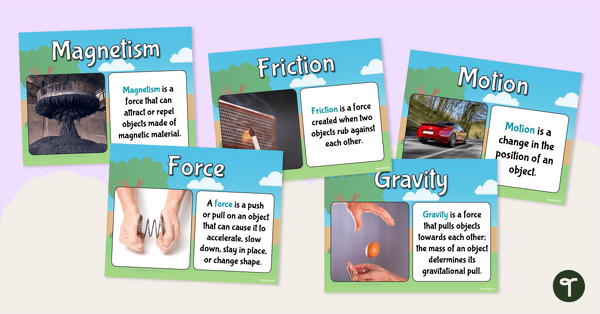
Force and Motion – Poster Pack
Display information about force and motion with this set of 12 vocabulary posters.
- Plus Plan

Force and Motion Vocabulary Puzzles
Reinforce science vocabulary with this set of 22 force and motion vocabulary puzzles.
- Plus Plan
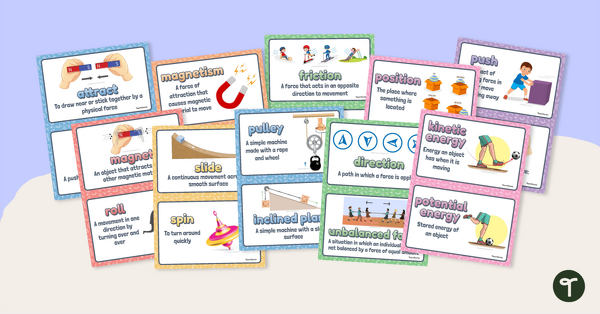
Force and Motion Vocabulary Posters
Display this set of 22 mini-posters in your classroom when learning about force and motion vocabulary.
- Free Plan
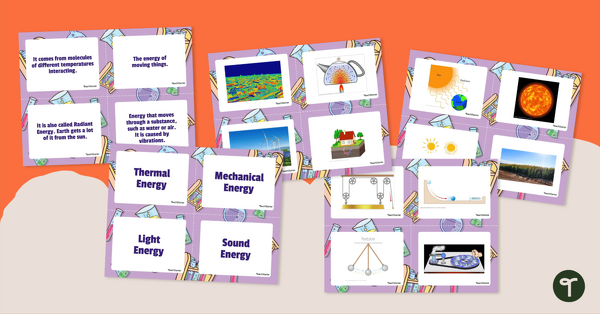
Forms of Energy Sorting Activity
Help students identify the different forms of energy with this set of 24 sorting cards.
- Plus Plan
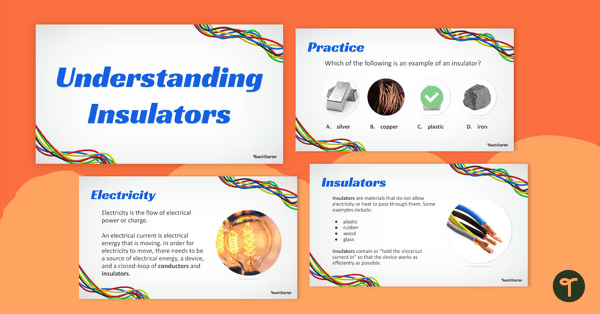
Understanding Insulators Teaching Slides
Teach your students about electrical and thermal insulators with this teaching presentation.
- Plus Plan
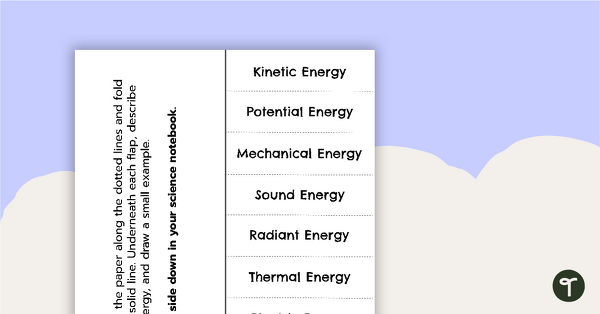
Forms of Energy Foldable
A foldable to use when learning about the different forms of energy.
- Plus Plan
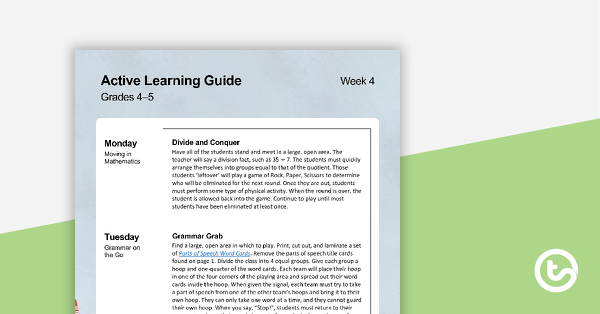
Active Learning Guide for Grades 4-5 - Week 4
Use this weekly active learning guide to celebrate National Physical Fitness Month in your Grade 4 or Grade 5 classroom.
- Plus Plan

Friction Experiment - Sticky Friction
Use this engaging friction experiment when teaching your students about sliding friction and the effect it has on the movement of objects.
- Plus Plan

Is It a Conductor or an Insulator? - Worksheet
With this hands-on worksheet, students will cut and sort conductors and insulators based on their ability to transfer heat energy.
- Plus Plan
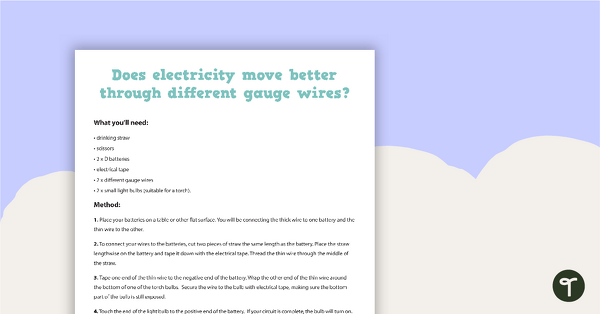
Electricity Experiment
An experiment to investigate if electricity moves better through different gage wires.
- Plus Plan
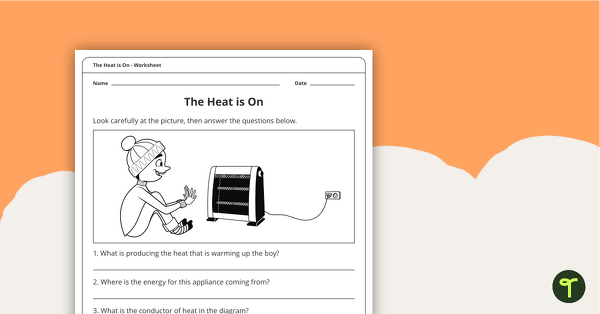
The Heat is On Worksheet
A worksheet that covers the topic of heat energy.
- Plus Plan
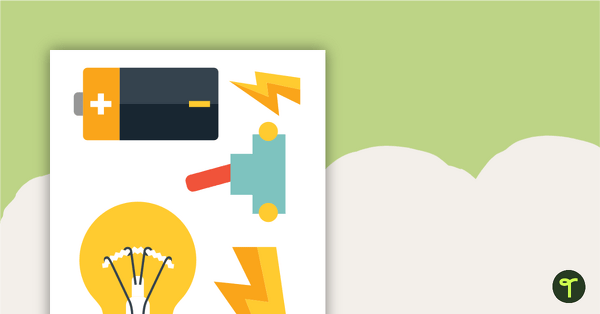
Electricity Cut-Outs
A set of cut-outs to use in your classroom when teaching an electricity unit.
- Plus Plan
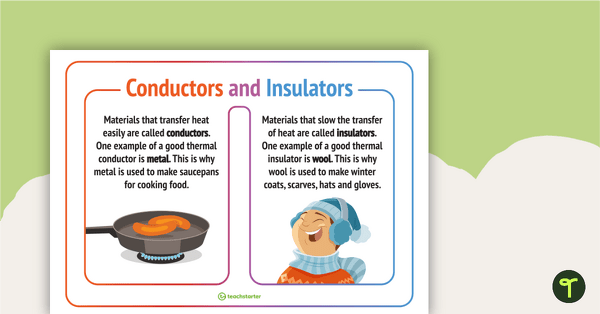
Conductors and Insulators Poster
A poster highlighting conductors and insulators of heat energy.
- Plus Plan
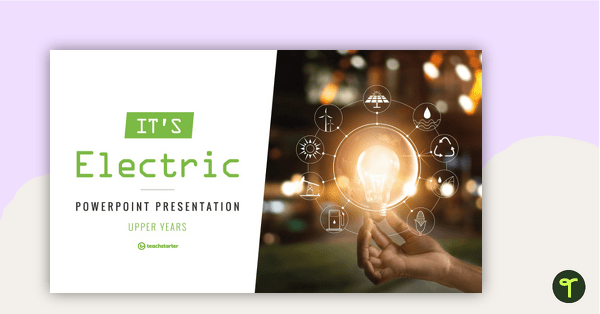
It's Electric! - PowerPoint Presentation
Teach your students about electricity with this editable 23-slide teaching PowerPoint.
- Plus Plan
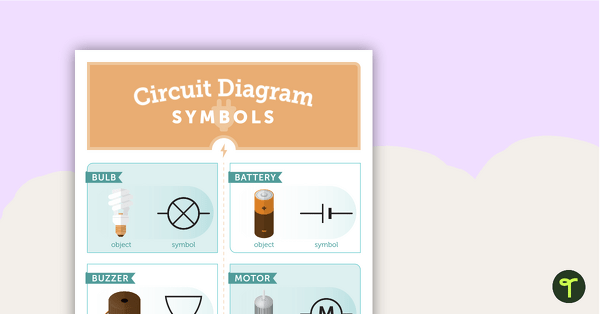
Circuit Diagram Symbols Poster
A poster that shows a range of symbols used for drawing circuit diagrams.
- Plus Plan

Lights Line Up!
A 60-minute lesson in which students will draw simple ray diagrams to show the paths of light from a source to the eyes.